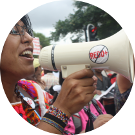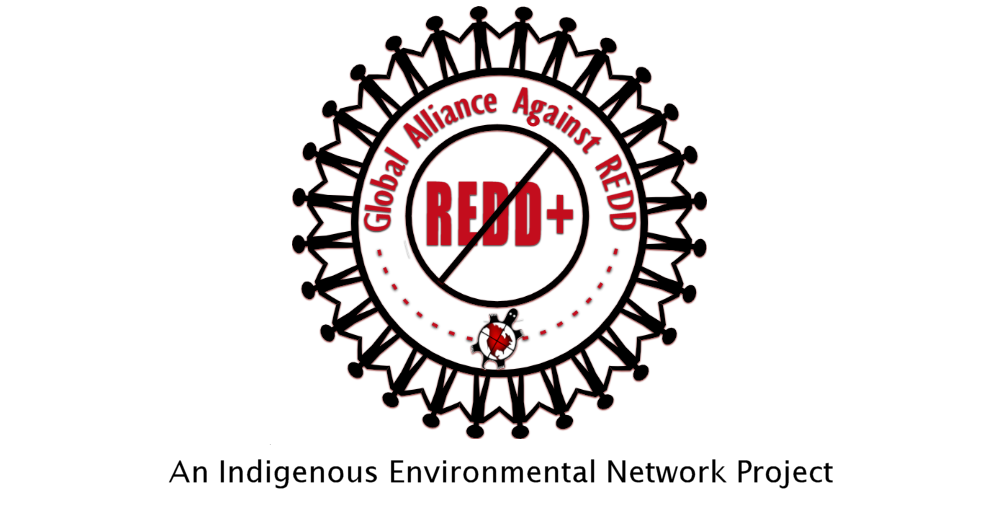By Chris Lang
 The issue of further guidance on Safeguard Information Systems was one of the key issues relating to REDD on the agenda at the UN climate negotiations in Lima last year. But no progress was made in Lima on this issue.
The issue of further guidance on Safeguard Information Systems was one of the key issues relating to REDD on the agenda at the UN climate negotiations in Lima last year. But no progress was made in Lima on this issue.
The text that came out of the UN climate negotiations in Warsaw (COP19) in 2013 is weak, even by UN standards. All it says is that every two years governments “should” provide a summary of information on how REDD safeguards are being “addressed and respected”. Least developed countries don’t even have to do that if they don’t feel like it.
At COP20 in Lima, a year later, governments were supposed to agree on further guidance for safeguard information systems.
No progress in Lima: An expert’s view
Peter Graham is currently the leader of WWF’s Forest and Climate Programme. Before that he was co-chair of the UNFCCC negotiations on REDD. He was lead negotiator and policy advisor on REDD+ for the Canadian government. I think it’s safe to say that he’s a “forest and climate expert” (as he describes himself on his LinkedIn profile).
Here’s how he describes the failure to progress on REDD safeguards in Lima:
“[T]he negotiators were looking at whether there was a need for additional guidance on the implementation or reporting on the Cancun safeguards. Many REDD countries said, ‘We’re implementing them, figuring out our system, making sure everything is connected,’ and they interpreted the calls for more guidance as additional demands being imposed even before they’ve been able to see if they have any problems or not. They’re basically saying, ‘You’re asking us to see how we’re doing before we do it,’ and they don’t see it as fair.
Then there’s our community – we see us as trying to help them reduce risk, because we’re worried that if they get the safeguards wrong, they won’t get any funding through the Green Climate Fund when they link to REDD. Both arguments are well-meaning and based on genuine concern.
Graham says that if “they” get the safeguards wrong, “we” won’t give them any money. This “us” and “them” analysis reveals rather more than Graham probably intended about the nature of the REDD debate, with its overtones of what Larry Lohmann calls “Green Orientalism“.
Results-based or safeguard-based payments?
To summarise this sorry tale so far: The UN REDD negotiators have agreed that governments are encouraged to promote and support a set of weak safeguards. Every two years (or longer for least developed countries), governments are encouraged to report on how these safeguards are being addressed and respected.
And if the rich North doesn’t like a REDD country’s report about safeguards, then the REDD country won’t get paid.
The issue of further guidance for safeguard information systems is on the agenda at the UN climate negotiations taking place in Bonn in the first two weeks of June 2015.
REDD-Monitor has written two posts giving line by line explanations of what’s wrong with the text on safeguards agreed in Cancun, and what’s wrong with the text on safeguard information systems agreed in Warsaw:
- REDD safeguards: What are they?
- The Warsaw Framework for REDD Plus: The decision on summary of information on safeguards
Despite (or perhaps because of) the obvious weaknesses, there is a small army of experts promoting REDD safeguards as the best thing since the Bali Road Map.
Learning from REDD Safeguard Information Systems?
Peter Graham moderated a discussion forum on “Learning from REDD Safeguards Information Systems: Voices from research, policy & practice” during the Global Landscapes Forum 2014 in Lima, during COP20. You can watch the discussion here:
- What are the key advances and challenges in the implementation of safeguard information systems by REDD+ countries?
- How can existing monitoring systems and datasets be leveraged to support safeguard implementation?
- Who will pay for safeguard information systems? How could these systems allow countries to access emerging financing opportunities associated with REDD+?
Good questions, but of course Graham didn’t ask anything about the weakness of the safeguards themselves, or about the fact that Cancun text states only that safeguards “should” be “promoted and supported” and what implications this might have when it comes to reporting on the safeguards.
Joanna Durbin, director of the Climate, Community and Biodiversity Alliance, talks about the REDD+ Social and Environmental Standards Inititiative. Set up five years ago, this voluntary initiative is working with 18 countries.
Towards the end of her talk Durbin asks,
Is there going to be a process of reviewing the information, to check that it’s accurate and is that going to involve stakeholders? Which could lead to a more credible set of information. Who is the information going to be shared with? And how?
More good questions.
Michael Bucki, Policy Officer at the European Commission starts his presentation by pointing out that he is giving personal view, “not stating any official position of anyone or anything”.
He talks about the cost of producing Safeguards Information, but adds that one of his contacts in the private sector told him that the cost is irrelevant:
“Because if you don’t do the safeguards you don’t do REDD. And it’s as easy as that. It’s [a] significant [cost] it’s true, but it’s not one on which you can spare, otherwise it will have no value on the market.
This almost sounds like No rights, No REDD. But it’s not. It’s more like No Safeguards Information, No REDD payments.
Bucki explains how the World Bank’s Climate Fund will pay for REDD emission reductions, according to the Methodological Framework:
A country will produce a certain amount of emission reductions but the Carbon Fund will not pay for all of these. There will be discounts because we anticipate that there will be some risk and some precautions need to be taken in relation with those risks.
And I do believe that the information provided by the Safeguard Information Systems will inform us on how sustainable the country approach is.
It has a very strong influence on how much carbon could be sold in the end. Actually, between 45 and 90% of the carbon that is generated and transferred to the Carbon Fund will be sold. So it’s a factor of two. Basically if you do the very, very basic MRV and very little on the sustainability aspect, you will get twice less than if you did the perfect risk proof version of REDD+.
So I think it’s a very, very strong incentive.
Bucki’s argument then, is that the quality of the information in the Safeguards Information System will help increase the value of the REDD credits, and therefore the amount of money that REDD countries will receive.
But increasing the quality of REDD credits (by improving the story told about those credits) will only help REDD countries to compete against other countries trying to sell their REDD credits. It’s likely to create a bonanza for consulting firms offering their services to write Safeguards Information Systems. But it is not going to do anything to increase the overall demand for REDD credits.
And of course Bucki doesn’t mention the fact that last year the Carbon Fund Participants said they would not pay more than US$5 per REDD credit.
REDD safeguards are not about upholding human rights. They are not about upholding indigenous peoples’ rights. They are not about land rights. The UN negotiations about Safeguard Information Systems are about setting the boundaries for the story telling that REDD countries can get away with and still hope to get paid.
